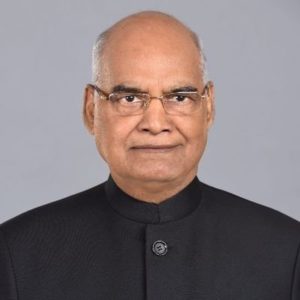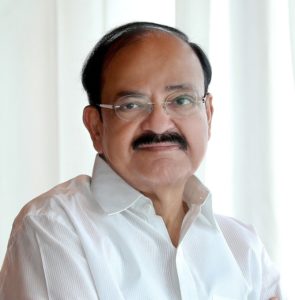About India
President Of India: Ram Nath Kovind
Vice President Of India: Venkaiah Naidu
Prime Minister Of India: Shri. Narendra Damodardas Modi
- Bharat Ganarajya
- Bharat
- Republic of India
- India
- in
- +5:30h
- +91
- New Delhi [The Municipality of New Delhi (pop. 11 million)].
- Mumbai Metropolitan Region (formerly Bombay, pop. 15 million) Chennai, formerly Madras (pop. 6 million), Calcutta (12 million); Bangalore (5 million); Hyderabad (5 million); Ahmedabad (3.7 million)
- Federal Republic
- 15 August 1947 (from United Kingdom).
- Location: Southern Asia, bordering the Arabian Sea and the Bay of Bengal, between Burma and Pakistan. Area: 3.3 million sq. km. (1.3 million sq. mi.) Terrain: varies from Himalayas to flat river valleys.
- Coal, iron, manganese, mica, bauxite, chromite, thorium, limestone, barite, titanium ore, diamonds, crude oil.
- Rice, wheat, oilseed, cotton, jute, tea, sugarcane, potatoes; cattle, water buffalo, sheep, goats, poultry; fish.
- Textiles, chemicals, food processing, steel, transportation equipment, cement, mining, petroleum, machinery, software.
- Indian Rupee (INR)
- Varies from tropical monsoon in south to temperate in north
People:
Nationality: Noun and adjective–Indian(s)
India is a country with a population of around 1.12 billion approximately. The current Indian population as on July 2007 is 1,129,866,154. India is the second most populated country in the world after China. Indian population has always been a major issue along with problems like poverty, illiteracy and unemployment. India is also a country that has the maximum number of youths. Indian population accounts for 16% of the total world population. The population density of the nation amounts to 324 people per square kilometer. India has a poor gender ratio with only 927 females per 1000 males. The rate of population growth in India is 1.606%. More than 70% of India’s population lives in rural areas. There are more than 550,000 villages and 200 cities and towns in India. 22% of the population lives below poverty line. Almost 75% of the country men are Hindus. India also has one of the world’s largest Muslim populations amounting to 160 million. The population also includes other religions like Christians, Sikhs, Jains, Buddhists, and Parsis.
India’s population like its culture and topography is remarkably diverse. The country has more than two thousand ethnic groups. There are more than two hundred spoken languages in India. The diversity is also lent by the social parameters such as income and education. The standard of living and the quality of life especially those of women remains poor compared to that of people in developed nations. Because of the Indian population problem, the progress of the country is hindered. Strict family planning measures have been implemented by the government of India to control the population explosion. Unemployment is the result of over-population. The unemployment rate in India is 7.8%. However with globalization, privatization and liberalization problems of unemployment have been solved to certain extent.
Scheduled castes and tribes are also a part of the population of India. Scheduled castes amount to16.2% and scheduled tribes amount to 8.2% as per the 2001 Census. There are reservations for these special category people as they belong to the backward class and off late the increase in this quota has created a lot of controversy in the country. The greatest number of tribal people live in Orissa. However, the populations of states in the northeast has the greatest concentrations of scheduled tribe members. 31 % of the population of Tripura, 34 %of Manipur, 64 % of Arunachal Pradesh, 86 % of Meghalaya, 88 % of Nagaland, and 95 %of Mizoram belong to the Scheduled Tribe. Though indian population is seen as a hurdle along its progress, it is also a power for India. No other country has such human capital and it truly makes India what it is rightly called as a ‘Young Nation’ emerging as a global power..
Background:
The Indus Valley civilization, one of the oldest in the world, goes back at least 5,000 years. Arab traders starting in the 8th century and Turkish in 12th. However European incursions began in the late 15th century. By the 19th century, Britain had occupied and assumed political control of virtually all Indian lands. Nonviolent resistance to British colonialism under Mohandas GANDHI and Jawaharlal NEHRU led to independence in 1947. The subcontinent was divided into the secular state of India and the smaller Muslim state of Pakistan. A third war between the two countries in 1971 resulted in East Pakistan becoming the separate nation of Bangladesh. Fundamental concerns in India include the ongoing dispute with Pakistan over Kashmir, environmental degradation, extensive poverty, and ethnic strife, all this despite impressive gains in economic investment and output.
Religious Freedom:
According to the constitution of India, the country is a secular republic. Indian citizens are free to follow any religion and faith.
Indians worship different Gods in many different ways. Religion with its rituals and philosophy forms the life style of any average individual born and brought up in India.
India has also created a platform for many religions from all over the world. However the main religions of India are Hinduism, Jainism, Sikhism, Buddhism, Islam, Christianity, Zoroastrianism and Judaism. About 80% of Indians practice Hinduism, 15.00% of Indians practice Islam, About 2.00% Christianity and 3.00% Sikhism and other religions. Popular faiths like Jainism and Buddhism which have originated in India are practiced all over the world today. But Parsis and Judais are a disappearing minority in India now. All religions of India have a wide reach and are recognized for their strength all over the globe. Indian society follows a rigid caste system. Indian people normally marry within their own communities and castes. Most Indians have a tolerant attitude towards other castes and communities. India has preserved its secular outlook through volatile a history of foreign invasions.
Communal clashes in India do occur but more often than not they are based vested political interests than genuine religious differences. The freedom to practice any religion of his choice is a fundamental right of every Indian citizen. There is an ongoing attempt to modify the Indian constitution in order to establish a uniform civil code for all Indian citizens. This concept is still in the process of taking manifestation as a directive principal. Religious communities follow their own personal codes for now. However Indian law is the same for people of all communities in India. Based on the religion, there are many religious festivals that are widely observed in India and they hold a great importance for the people. India’s secular governance states that no religious festival should be given the status of a national holiday. Holi, Ganesh Chaturthi, Diwali, Durga puja, Dussehra and Sankranthi are the most popular Hindu festivals in India. The Islamic Eid festivals of Eid-ul-Fitr and Eid-ul-Adha are the most celebrated among the Muslims. Christmas, Buddha Jayanti, and Guru Nanak’s Birthday are holidays among the remaining religious groups. However, the best part is that be it any festival Indians from all castes and communities come together to celebrate the event. Languages: Hindi, English, and 16 other official languages. Literacy: 65%.
Just as India’s culture is, its geography too is varied and diverse. Right from the snowy mountains in the north to dense forests in the south and arid deserts in the west, India offers it all. With a coastline of 7000 km., India is a peninsular country which protrudes in the deep indian ocean. India is surrounded by Arabian sea on one side and Bay of Bengal on the other.
The geography of ancient India included Pakistan and Bangladesh which later became separate nations after the Indian independence. India is now bordered by Pakistan, Afghanistan, China, Bhutan, Nepal, Myanmar, Bangladesh. Sri Lanka, Maldives and Indonesia are island nations that are to the south of India. Sri Lanka is separated from India by a channel of sea formed by Palk Strait and the Gulf of Mannar. Independent India is divided into 28 states and seven union territories.
Most of the northern, central, and eastern India are occupied by the fertile Indo-Gangetic Plain making it ideal for production of many food grains. The Deccan Plateau occupies most of southern India while the Thar desert is towards the west. India’s east and northeastern border consists of the high Himalayan range. In fact, India can be divided into seven physiographic regions such as the Himalayas and the northeast mountain ranges, Indo-Gangetic plains, Central Highlands, Thar Desert, Deccan Plateau, West Coast, East Coast and seas and islands. India is one of the nations having nine major mountain ranges with peaks over 1,000 m The Himalayas are the only mountain ranges in India to have snow-capped peaks. Some of the famous mountain ranges in India are Himalayas, Aravalli Range, Vindhya Range, Eastern Ghats, Patkai range, Sahyadri, Satpura Range, Karakoram and the Kunlun range. India has two major offshore islands namely; the Lakshadweep islands and the Andaman and Nicobar Islands both of which are administered by the Union government of India. Some of the major rivers in India are Indus, Ravi, Jhelum, Chenab, Sutlej, Beas, Ganga, Chambal, Yamuna, Gomti, Bhramaputra, Krishna, Kaveri, Narmada, Tapi, Godavari and Mahanadi.
The geography and climate of India is so varied that it cannot be generalized as its changes from region to region. The seasons of India is mainly defined by summer, rainy and winter. The most pleasant time to visit India is during winters. India’s northern plains are the first to experience summer during the end of March and it builds up in the month of April, May and June. During June, the temperature soars up to almost 45 degree Celsius. The southern India experiences hot and humid climate during this month. In terms of geography, India is one of the most feasible countries to travel especially with its good road and rail facilities that connect so many places. In India geography, ethnicity, languages, cultures and habits of people are in sync with itself. With each different state of India, one will notice a new culture and a new language. The geography of India truly makes it a favorable tourist destination.







